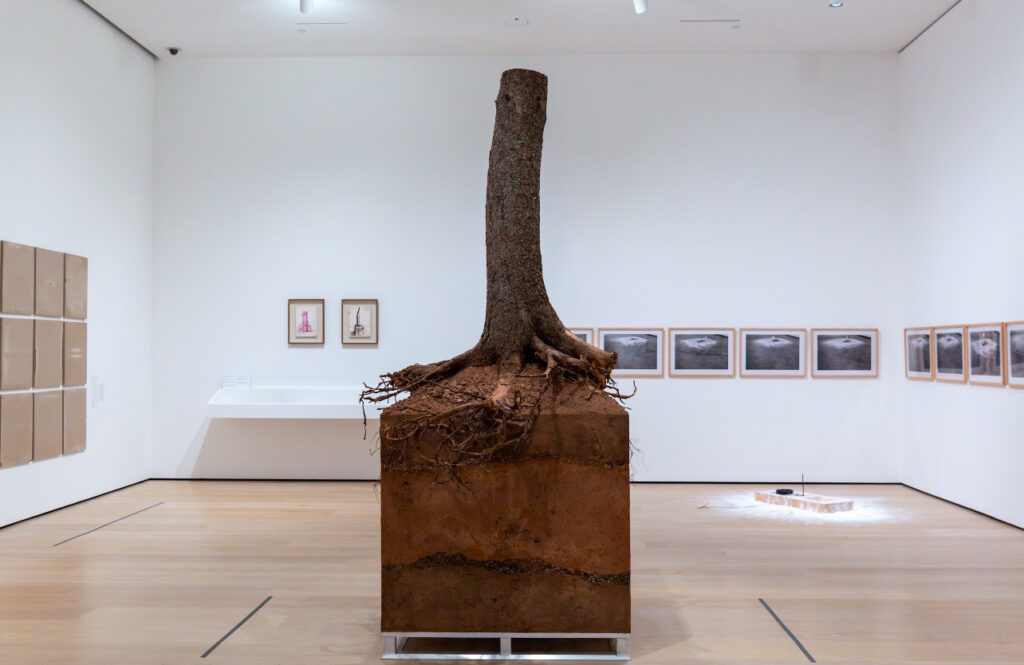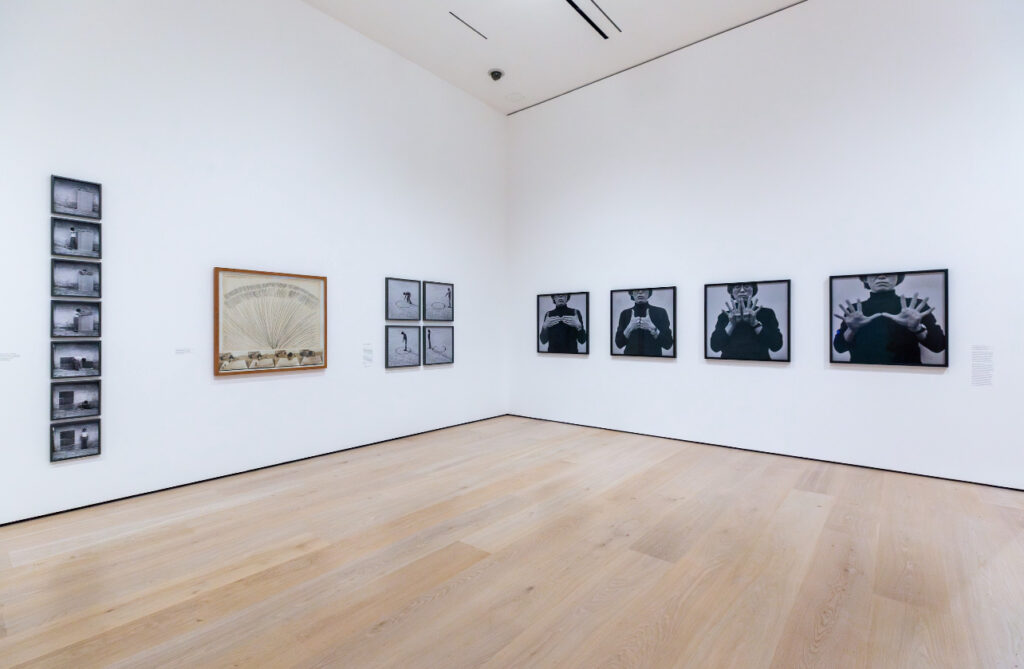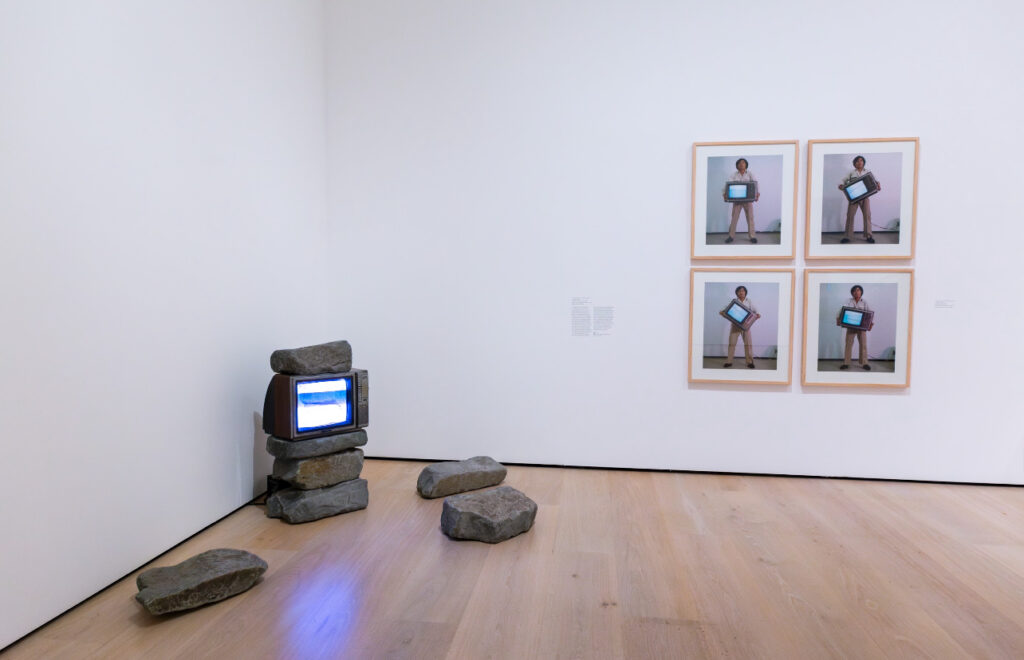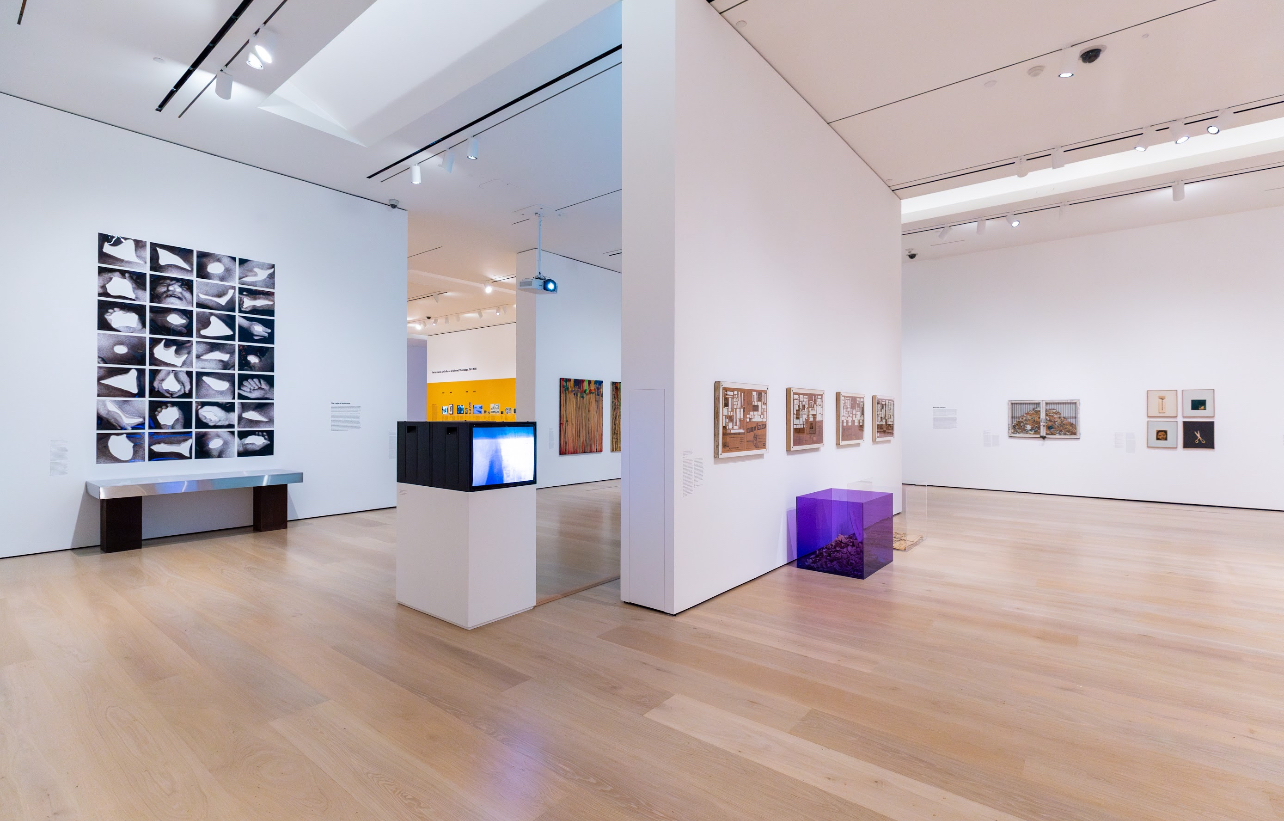Photos by Ashley Kruythoff ; Written by Shua U
Recently attending the exhibition “Only the Young: Experimental Art in South Korea, 1960s–70s,” I was immersed in a captivating journey through the groundbreaking work of Korean artists emerging in the post-Korean War era. The exhibition, the first of its kind in North America, sheds light on a pivotal moment when artists challenged the established norms of the local art scene and embraced innovative practices.
One standout piece was Sung Neungkyung’s “Apple” from 1976. What made this piece particularly intriguing was its unconventional placement – painted directly on the exhibition room’s wall. This bold choice transformed the artwork into an integral part of the exhibition space, blurring the lines between traditional art and the environment.
Ha Chong-Hyun’s “Work 73-13” left a haunting impression. The natural-colored painting encased in a grid of real barbed wire, emitted an eeriness that resonated with the intense cultural transition faced by South Korea during that time. The stress on the fibers and the tangible presence of barbed wire added a visceral layer to the artistic expression.
“Visual Sense I, II” by Kang Kukjin was a sensory delight. Beyond being visually striking, the neon lights inside the vertical steel cases emitted a subtle but audible buzz. This auditory element added an intriguing dimension to the piece, inviting viewers to consider the interplay of light and sound, possibly reflecting the complexities of the social and political landscape in South Korea during the depicted period.
The exhibition also featured a live performance by DynamicDuo, a prominent Korean Hip-Hop artist, accompanied by the dance group PROWDMON. The energetic performance brought the artworks to life, creating an immersive experience that resonated with the dynamic and avant-garde spirit of the showcased art. The crowd’s enthusiastic response, marked by screams of excitement, highlighted the successful fusion of contemporary Korean music and experimental visual art.
To summarize, the “Only the Young” exhibition not only took us on a journey through South Korea’s artistic evolution but also provided a sensory and immersive experience. The exhibition succeeded in pushing artistic boundaries by placing art unconventionally and integrating real elements like barbed wire, culminating in a live performance that electrified the atmosphere. This brought the experimental art of 1960s-70s Korea into the present moment.



